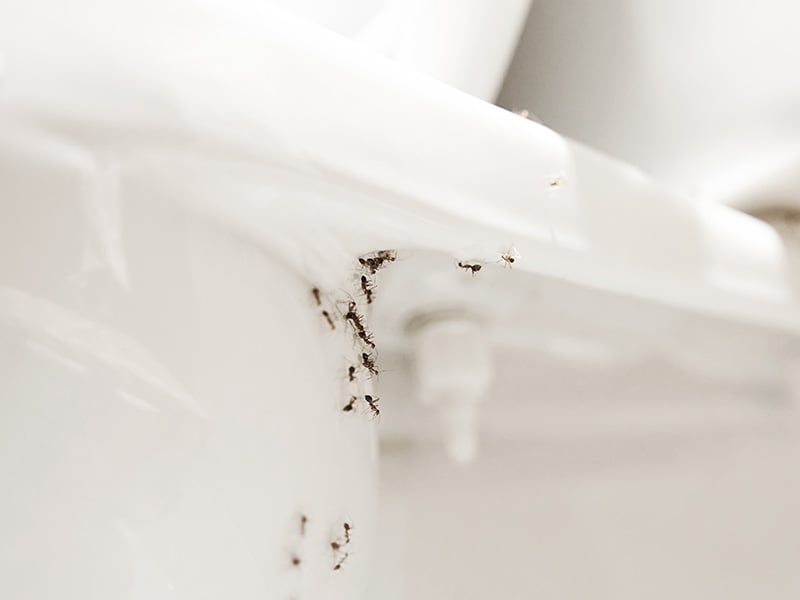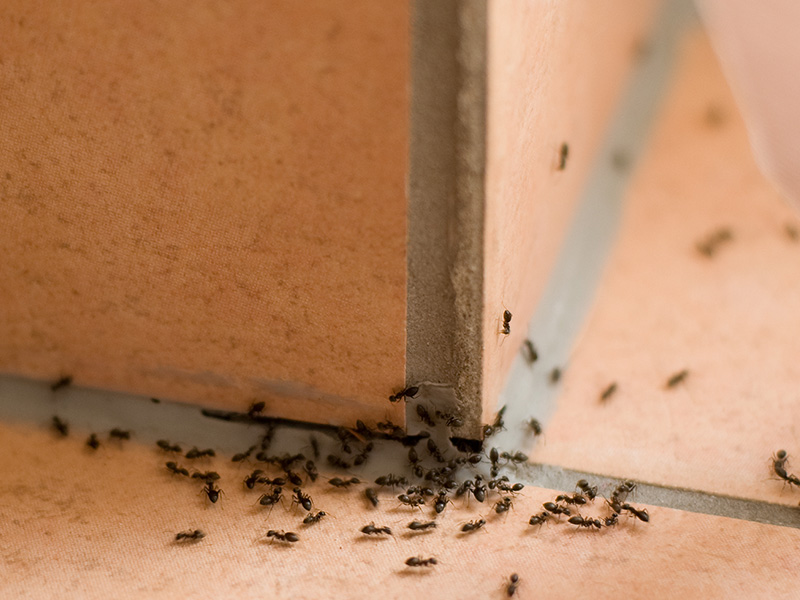
What do rover ants look like?
At 1/16 to 1/12 of an inch long, rover ants are tiny, dark brown to pale blonde ants. They have one node on their petiole, non-stinging. Workers are similar in size. Nine antennal segments is a key feature of rover ants and their swollen abdomens cover petioles.
When are rover ants most active?
Life cycle of rover ants
Complete Metamorphosis
Single queen colonies. Colonies small in size but can have several colonies in one area. Reproduce through swarming in Spring and Summer. More research being completed on these ants.
Habits of rover ants
- Diet: Honeydew from aphids and similar insects is the favorite food source. Protein also a food source.
- Activity: Often seen moving vertically up objects and plants.
- Preferred Climate: Moist, warm environments.
- Defense: Small, independent colonies
- Cautions: May need a few follow-ups to eliminate.
- Home Invasion: Usually found in homes near a moisture source. Bathrooms, kitchens especially if leaky pipes exist. Outside they are found in soil or wood piles.
Are rover ants dangerous?
Rover ants do not sting or bite.
Where do rover ants nest?
Rover ants often nest indoors in bathrooms and kitchens as well as inside potted plants, electrical outlets, and wall voids.
Outside, they nest under stones and other landscaping elements.
Helpful hints for rover ants
To keep rover ants away from your home or business, you should:
- Repair leaky pipes
- Don't over-water your yard
- Keep honeydew producing insects to a minimum through landscaping maintenance
- Have a pest control plan in place
Interesting facts about rover ants
Southern Arizona researchers believe that rover ants are successfully moving into our area because larger native species are not aggressive against them, an atypical behavior.
How do you get rid of rover ants?
If you’ve found rover ants in your bathroom, nesting in your house plants, or crawling around outside, contact Northwest Exterminating for home pest control services that don’t just eliminate ants, but also prevent them from re-infesting.

Testimonials
Request Your FREE Estimate
Have questions or need help getting rid of rover ants or other pests? Simply complete the form below or give us a call!



